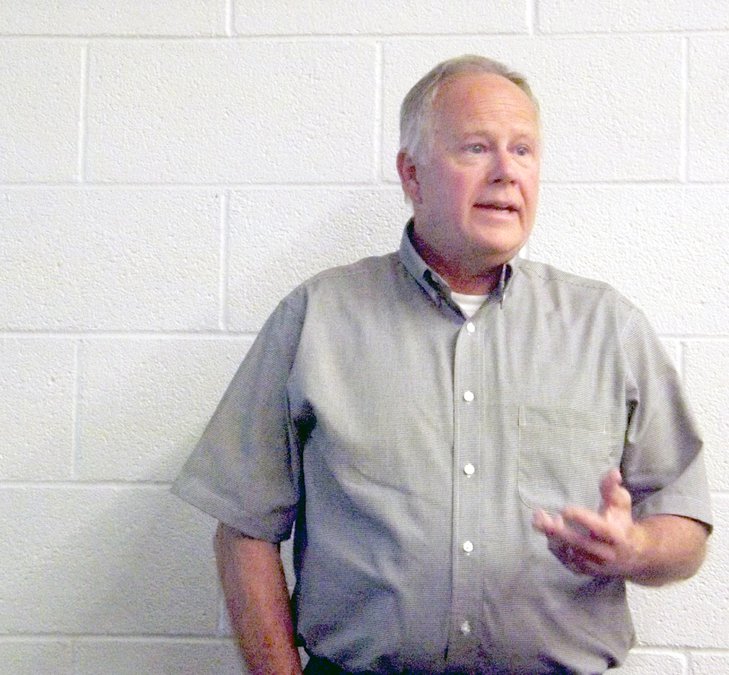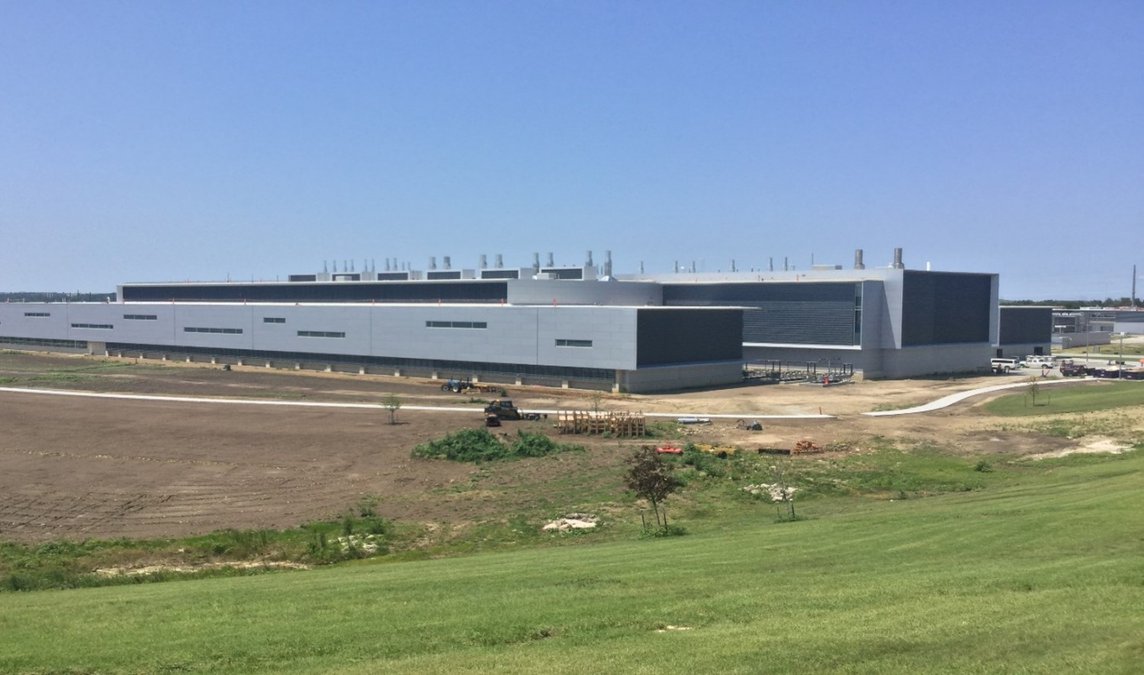The National Bio and Agro-defense Facility, or NBAF, under construction at Manhattan, Kansas, will be America’s foremost animal disease research facility. NBAF Coordinator Dr. Ken Burton, DVM, returned to the Golden Belt on Wednesday to talk about the $1.25 billion facility that will eventually replace the aging Plum Island Animal Disease Center in New York.
“We’re going to double the research program from Plum Island,” Burton said.
Burton, who earned his bachelor’s degree and DVM from Kansas State University, owned a veterinary practice in Lyons from 1982 to 2010. He then sold his practice to move back to Manhattan as a project manager/analyst for the National Agricultural Biosecurity Center. He spoke at the Great Bend Kiwanis meeting, where he was the guest of local veterinarian Dr. Terry Turner, DVM.
NBAF is under the Department of Homeland Security but by the end of 2020 its ownership and operational responsibility will transfer to the U.S. Department of Agriculture. That’s also when construction of the main lab should be done. The overall construction is 82 percent complete, Burton said.
Its mission is one of national defense, protecting our food supply and public health. The research mission is to protect U.S. livestock from foreign animal diseases, including zoonotic diseases — animal diseases that can be transferred to humans. Over two-thirds of the diseases emerging in humans over the last decade came from animals, Burton said.
“Out here, everybody is very in touch with agriculture,” Burton said. But many people don’t realize that about one in every 10 jobs in the United States have some connection to agriculture. “NBAF is essentially an insurance policy against a catastrophic risk to a critical sector of the U.S. infrastructure.”
Agroterrorism is only one potential large-scale threat. There are also unintentional transboundary animal diseases and emerging infectious diseases that we don’t even know about yet.
“The unintentional threat, I think, is the biggest risk,” Burton said.
Highest level of security
Research labs have biosafety levels, with BSL-3 and BSL-4 being the most demanding laboratory environments. That’s why the research labs will be able to withstand an F-5 tornado with no damage.
At this time, there are only four BSL-4 ag labs in the world – in Canada, United Kingdom, Germany and Australia.
“Right now, we go to those labs to do research,” Burton said. The United States does not have a laboratory facility with maximum biocontainment (BSL-4) space to study high-consequence zoonotic diseases affecting large livestock.
Making the BSL4 labs operational will be the final part of the project, with everything transferred from Plum Island by the end of 2023.
Not all of the Plum Island scientists will choose to move to Kansas but many of them are warming to the idea after visiting the future NBAF site a few times, Burton said. “Some are calling Manhattan ‘Plum on the Prairie.’”
Meanwhile, the USDA has started the NBAF Scientist Training Program. When all of the work on NBAF is done, it will employ just under 400 people.
If you’re interested in applying for a job at NBAF, log on to usajobs.gov, the federal government’s official hiring website. A search of that site Thursday, typing in the keyword “NBAF,” showed two permanent, full-time job openings at this time; one was for a supervisory industrial hygiene and safety manager, with a starting salary of $88,704, and the other was for an incinerator operator, starting at $22.73 per hour. At an NBAF Career Fair in June, USDA announced it was hiring operational staff, facility maintenance personnel and administrative support positions.









